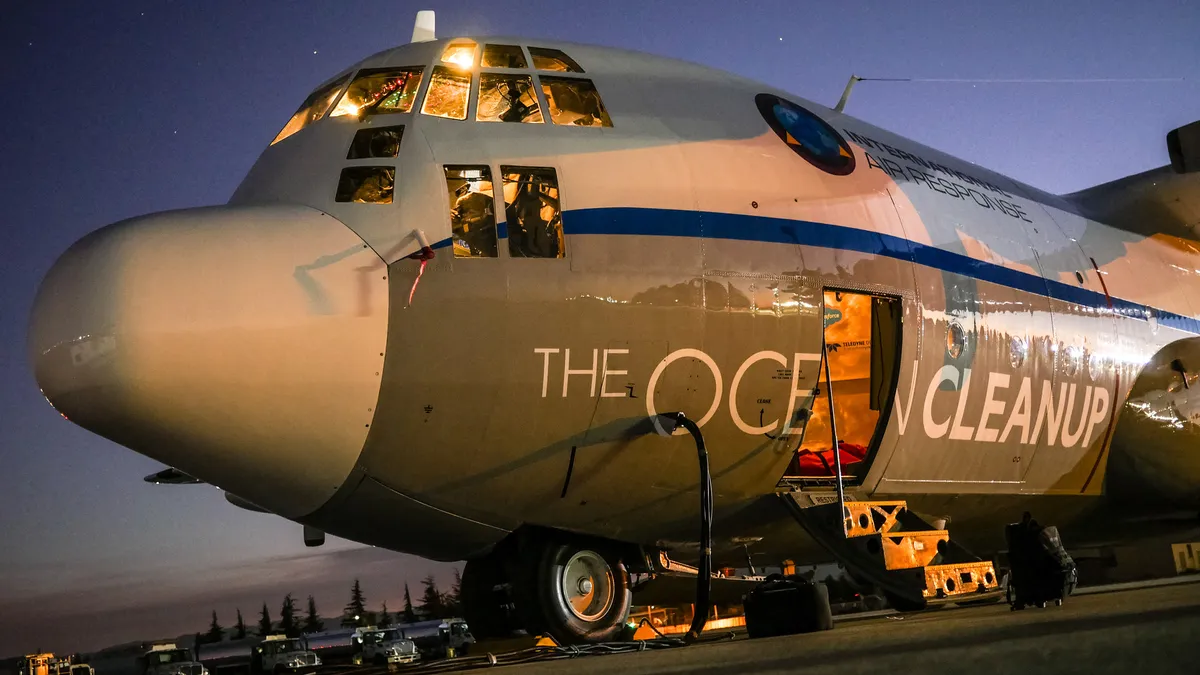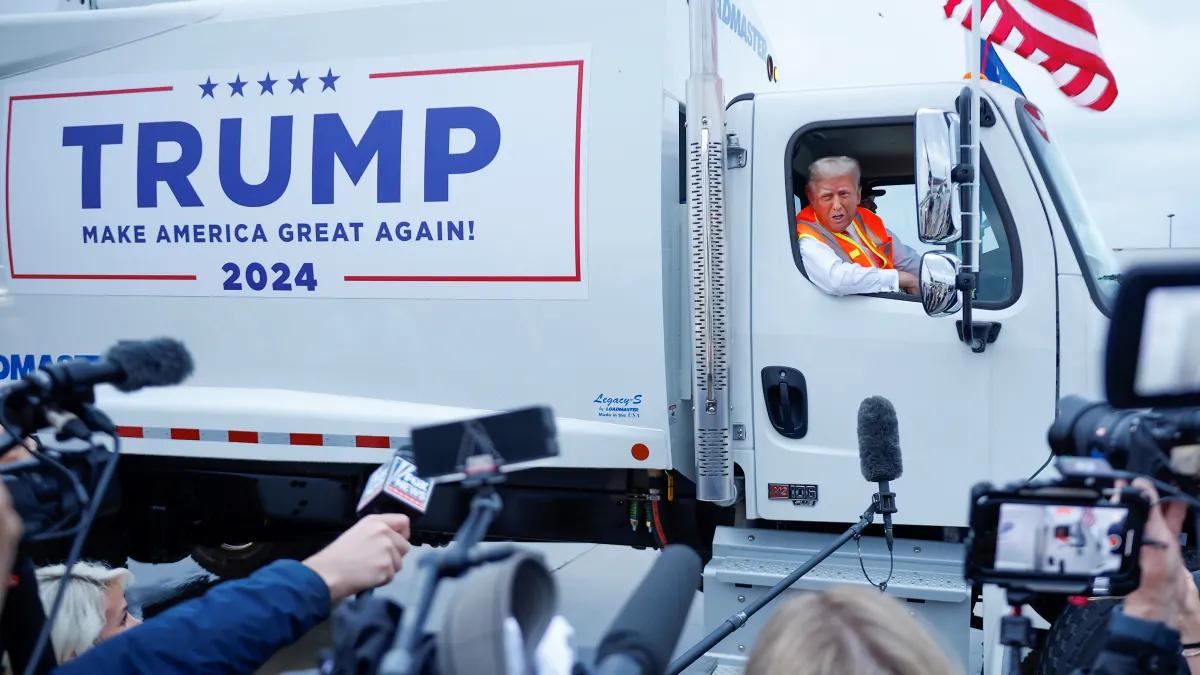Dive Brief:
- The Ocean Cleanup foundation conducted its first-ever aerial reconnaissance mission over the Great Pacific Garbage Patch to gather more data about the scale of marine pollution. At a press conference in California on Oct. 3 CEO Boyan Slat said, "It's really quite safe to say that it's worse than we thought."
- Using a C-130 Hercules aircraft the team conducted low-speed, low-altitude flights to record the presence of debris larger than 1.5 feet. Advanced LIDAR and infrared scanning devices were used along with double-blind human observers.
- Initial results from the northern boundary of the patch — which is less dense than the center — found more than 1,000 items within two-and-a-half hours. These results will be combined with data from the 2015 Mega Expedition which involved 30 boats crossing the patch simultaneously to sample debris. The findings will be published in a peer-reviewed scientific paper early next year.
Dive Insight:
This project was started in 2013 by Slat, who was 18 at the time, and has since grown to include about 50 employees with plans to hire more soon. A 100-meter prototype barrier was deployed in the North Sea earlier this summer ahead of plans for a larger pilot next year. The overall plan is to deploy a multi-kilometer barrier in 2020.
While funding and design work continues on the barrier, Slat said it was important to learn more about the amount and type of waste they will be collecting. This will determine the size and frequency of collection boats as well as the processing capacity needed. The "ghost nets" from fishing operations will be more challenging than plastics. Gaining a new understanding of these larger items is also important because eventually they will break down into smaller particles that are harder to collect.
"This underlines the urgency of why we need to clean it up and we really need to take care of the plastic that’s already out there in the ocean," said Slat at the press conference.
The marine plastic situation has become a major focal point in recent years due to the work of people such as Slat. The recent Our Ocean Conference in Washington D.C. drew President Obama among many other high-profile names and led to millions of dollars in funding commitments. Many other research and technology projects are also underway throughout the world, though if successful, The Ocean Cleanup's barrier would be the largest by far.















